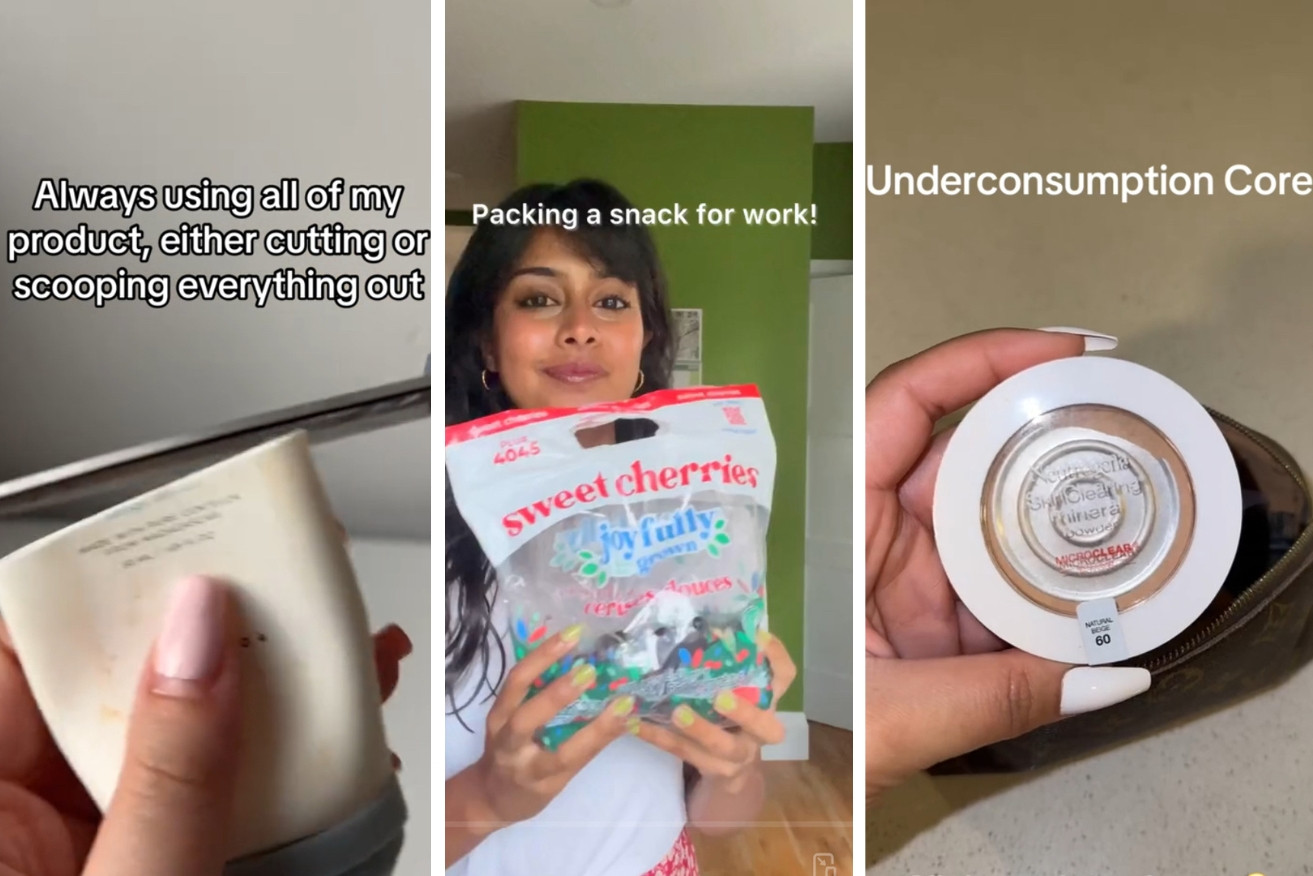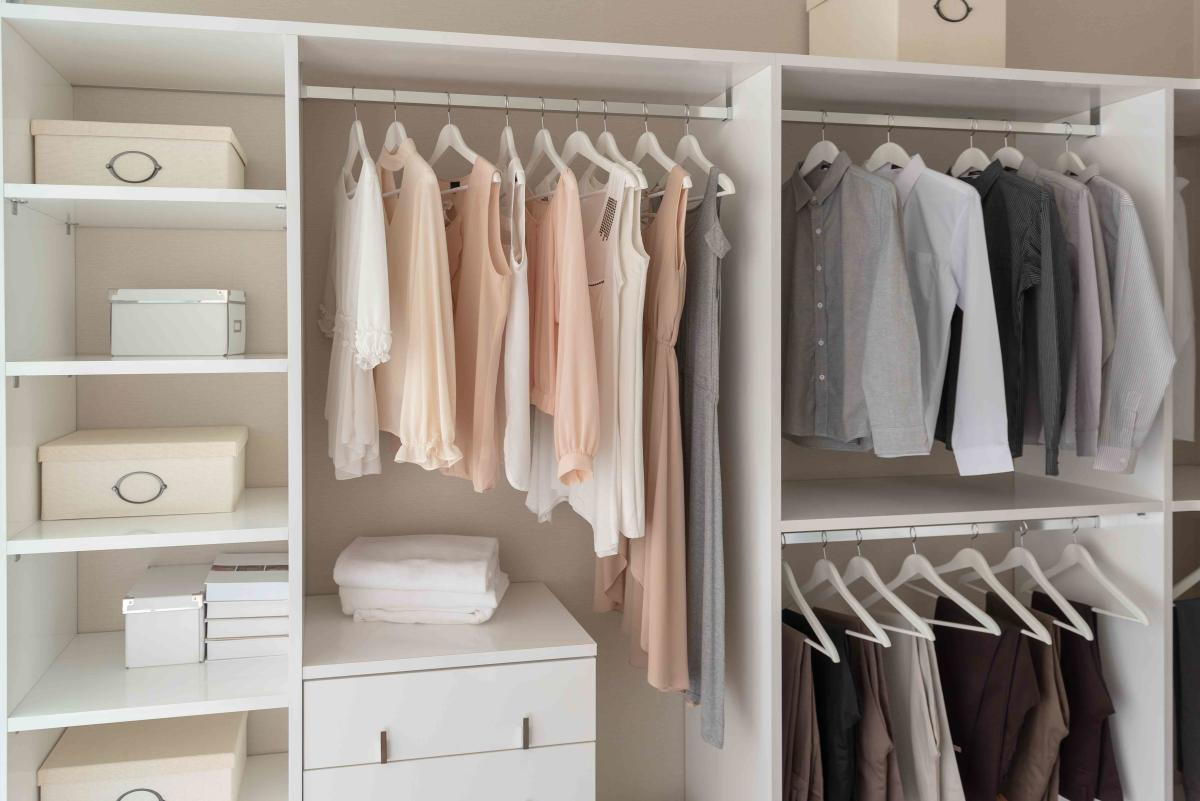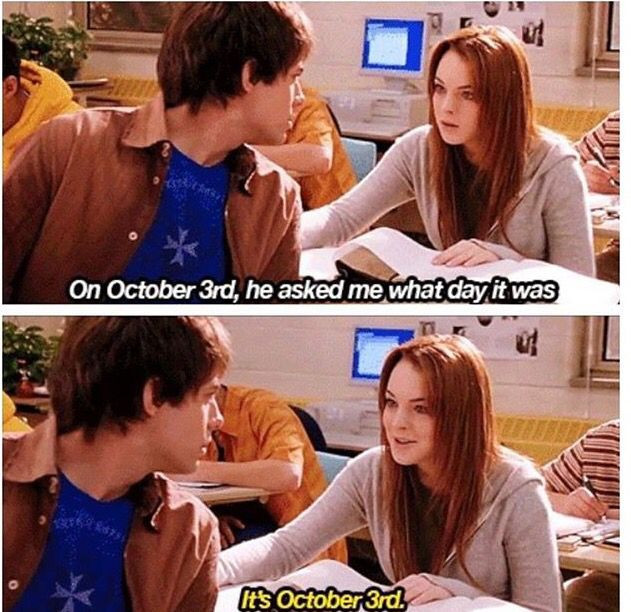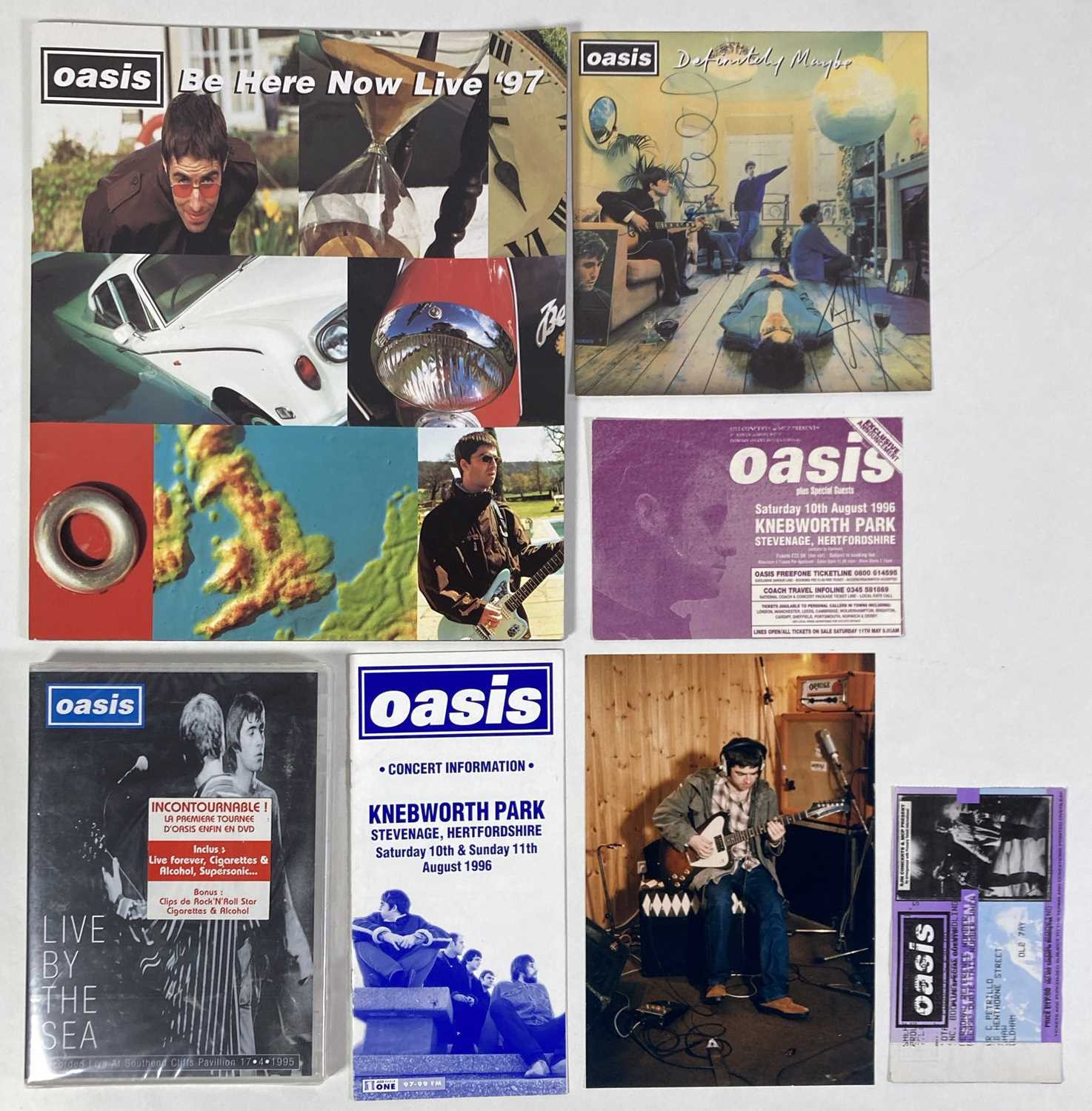On TikTok, most people’s feeds are flooded with product reviews that encourage impulse buying: “This Amazon bodysuit on sale is a must-buy.” “This cult-favorite travel pillow is worth the hype!” “Yes, it’s $600 but this Dyson blow-dryer will change your life.”
Then there’s “underconsumption core.” The new viral trend on TikTok encourages consumers to be a little less spend-happy and more conscientious about what they bring into their homes.
It’s garnered plenty of attention off-platform, too: Google searches for “underconsumption core” have surged by 1150% in the last few weeks, according to the digital marketing firm Webbee.
April Silva, a TikTok user and lifelong thrift store fan, is a big proponent of underconsumption core. She defines it as a more minimal approach to shopping: You don’t need five winter coats when you have one perfectly good one. You don’t need every color of Stanley cup or “massive Shein hauls just for content,” she said.
“Most of the clothing you see in people’s clothing haul are just trend pieces and it won’t hold up in your closet over time, and I say this as someone who likes fashion,” Silva told HuffPost. “What I choose to spend my hard-earned money on matters and I try to be smarter about it every day, and that’s what this trend is about for me.”
Instead of pressing “buy now” on hyped products, underconsumption-core adherents lean into capsule wardrobes (basically, buying pieces of clothing and accessories that are easy to mix and match), using makeup until it’s “down to pan” (finishing the entirety of the product until you hit the pan of the compact), and shopping secondhand whenever possible.
In many ways, underconsumption core is the spiritual sister of another recent trend: deinfluencing, where social media influencers try to dissuade followers from buying cult-favorite products they’ve had lackluster experiences with.
Both fall into what might be called “recession-core influencing”: When money is tight and the costs of living and rent are going up, who can stomach buying a $42 highlighter? (As one person joked on TikTok: “Underconsumption core but it’s actually the reality of living under the poverty line.”)
“I think it’s that and a response to the constant exposure to perfectly curated homes and wardrobes all over our For You pages,” she said. “I would also add that the insidious introduction of TikTok Shop [which lets brands and sellers sell directly on the platform] has added to the frustration.”
Trends like these tend to be cyclical, said Jessie Kosak, an instructor at Arizona State University’s Fashion Institute of Design and Merchandising. (Remember a few years ago, when everyone was into Marie Kondo and trashing items that didn’t “spark joy”?) Kosak, a millennial, remembers a version of underconsumption core that was simply called “minimalism.”
“That was admittedly was flawed from the start, because it implies a specific aesthetic that becomes more and more difficult to adhere to,” she said. “With trends like this, people sometimes swap one form of consumption for another.”
Kosak isn’t surprised that Gen Z, a demographic whose members grew up inundated with ads for stuff they didn’t need, is embracing a “consume only what you need” mindset.
“They’re constantly targeted by advertising and conditioned to want more stuff, but I think as each generation grows, they realize they just don’t need all of it,” Kosak said.
Gen Z is also keenly aware of environmental issues that fast fashion plays a direct role in, like greenhouse gas emissions and garment manufacturing processes that harm wildlife, degrade land and pollute soil and water. That’s a huge deal for Gen Zers: A recent Pew study shows that 76% of Gen Zers are worried about climate change, with 37% saying it’s their biggest concern of all.
Jennifer Bertling, who runs a TikTok account about her Chihuahua mix Milly, also thinks Gen Z is leading the charge. That said, she told HuffPost that her boomer parents practiced what might now be called underconsumption core, moving their family to a self-sustaining off-grid farm run entirely on wind and solar power on Canada’s Prince Edward Island when Bertling was a teenager.
Now, living in Los Angeles with Milly, Bertling said she tries to live simply, and takes satisfaction in giving things a second life.
“Especially here in L.A., which is a transient city that people are constantly moving into and out of places, there’s very little need to buy new,” Bertling said, adding that she’s part of several local “Buy Nothing” groups on Facebook.
“Another example is, my elderly neighbor was moving out and he told me his biggest fear was for his things to end up discarded on the sidewalk in a pile,” she said. “I took a leather couch off his hands, and it brings me great joy to have given this couch another life.”
Bertling also tries to limit her food waste as much as possible, using leftover scraps to make vegetable or bone broth and freezing anything that’s about to expire for a later meal. Even Milly still has the same blanket she got when she was first brought home.
“It’s not aesthetic, but it’s hers,” Bertling said in an “Underconsumption Core: Dog Mom edition” video on TikTok.
Christina Mychaskiw, a content creator and co-host of the “Sustain This!” podcast, said she appreciates the latest “less is more” trend because she knows the toll that addictive shopping can take on young people.
Online, Mychaskiw is open about how difficult it was to get out from under her student debt because of her emotional spending habits. On her YouTube channel, she chronicled her “no buy” year, a period when she only bought essentials: food and certain items of clothing when necessary.
In that year, she learned that, like many people, she was consuming more than she really needed, spending emotionally to relieve things like boredom, and shopping for an idealized “fantasy” version of herself, rather than for who she was in the moment.
“I think this trend speaks to that,” Mychaskiw said. “What you should be doing is curating your life with the things you love, buying things with intention and being mindful of what you bring in next.”
As underconsumption core has taken off, Mychaskiw thinks this aspect of the trend has gotten away from people. Some TikTok users are making it a competition about who can live the most bare-bones life.
“I’ve seen some videos of things where I’m like, ‘Hm, maybe that’s a fire hazard to not replace that thing,’” she said. “There’s a video of a woman sharing her sustainable life, and people were like, ‘Well, your fridge is so full so you’re not underconsumption core,’ and ‘You have kids so you’re not underconsumption core.’”
“We all have our version of how to be a better consumer,” Mychaskiw said. “It’s not about getting rid of everything for the sake of getting rid of things.”
Kosak agrees that just chucking all your stuff into a donation bin isn’t the goal. Instead, she hopes people use the underconsumption core trend as a catalyst to examine their needs and gravitate toward pieces that are emotionally durable ― purchases that are meant to be cherished and kept, thus reducing consumption and waste of natural resources.
It’s not necessarily easy to make that kind of shift in your relationship with shopping. But Kosak said it’s worth it.
“We are constantly conditioned to compare ourselves to others, and on some level it’s easier than looking inward for self-actualization,” she said. “Whether it’s a sweater that we see on an influencer or a new trend on TikTok, rather than jumping all in, I think it’s always better to step back and ask yourself: ‘What part of this is appealing to me, and why?’”
Underconsumption Core: A Shift in Mindset?
Influencers are pushing back against consumerism by encouraging followers to repair or repurpose their stuff. But is this ‘trend’ just what many people call normal life?
“This is your daily reminder that most of the content you see online is not the way most people live,” says sustainability influencer Sabrina Pare, in a video she posted to her 250,000 TikTok followers recently. “It is OK to be content with your simple life,” she continues as she makes her bed. “It is not normal to do massive clothing hauls, daily trips to Target and have a new outfit every day. Nor do I think it should be aspirational.”
It is one of a slew of videos that are surfacing online of people making a point of using and appreciating what they already have, or what they find on online hand-me-down groups, rather than showing new clothes acquired on the daily from Amazon or the next Stanley cup accessory, or the latest Dyson hairdryer. It’s all part of a trend aiming to encourage people to reconsider how much they consume – say hello to underconsumption core.
Also called normal core or normal consumption, the movement is about taking on an attitude of mindfulness and “less is more” at a time when overconsumption is rife and TikTok is full of content encouraging users to buy things they don’t need. Pare, who goes by @sabrina.sustainable.life on TikTok, says underconsumption core videos show items that “might not be the newest, but still work”. Underconsumption core influencers, she says, are “showing items they have upcycled, ways they reduce waste, and things they have gotten secondhand. It’s all about extending the life of your items, reducing the number of items you own, and being mindful of your purchases.” Pare has been posting frequently about underconsumption core since the middle of July, which is when she says she began seeing it popping off on TikTok. It follows the deinfluencing movement, which started last year and encouraged consumers not to buy anything. Now, creators are proudly showing the use and reuse of everyday items and clothes they’ve had for years. In another of her recent videos, Pare shows how to extend the lifespan of your knives. It’s not the most glamorous or compelling content on social media, but Pare’s videos have amassed nearly 15m likes.
The Aesthetics of Underconsumption
Amid new “cores” popping up every day, which encourage mass consumption, underconsumption core is tongue in cheek. “The irony lies in the fact that underconsumption is a practice, while ‘core’ refers to an aesthetic,” says trend creator and Depop trend specialist Agus Panzoni. How can you under consume when there is no codified amount you are meant to consume? And what does it matter what consuming less looks like – the point of the movement is surely in the doing, rather than what that looks like aesthetically?
According to Shanu Walpita, a trend forecaster who teaches in the communications department at London College of Fashion, “underconsumption core is a memetic antithesis to a consumerist hype cycle we have become accustomed to”. It’s a viral rebranding of conscious consumerism where people are flexing “luxe” slowness. Beyond this, it reflects a growing shift in consumer behaviour. “People want to lower the quantity of clothing they’ve purchased and focus on sustainable, and mindful purchasing habits,” says Panzoni.
Underconsumption core is driven by several factors, including, “environmental awareness,” she says. “The spotlight that has been put on fast fashion and its damaging impacts, as well as the global increase in desire to buy secondhand … To quote a Brat commandment, directly from the messiah, Charli xcx: you should rewear an item to death’.” According to Walpita, defluencing, defashioning and other de/core buzzwords have been hinting at this shift in consumer mindset for a while now. “Consumers are celebrating minimalism as a form of activism,” she says.
The Financial and Ethical Implications of Underconsumption Core
But good intentions and “doing better” to one side, “there’s no denying acute financial and economical constraints play a part in the advancement of this trend,” says Walpita. As people have less money, many have had to foster more of a make-do-and-mend mindset.
Critics have been quick to highlight that the tenets of underconsumption core are nothing new. Although Pare says it feels good to see others posting the kind of content she has always shared – “I love this trend. I love to see how widespread it has become and how many people are participating.” – she also points out that “lower-income individuals have been doing many of the things that are shown in these videos for ages”. But rather than glamorising a certain way of living, she believes underconsumption core is normalising the way many people already live. “I think of my immigrant grandparents who don’t waste a crumb of food. They would be very happy to see this trend,” she says.
Walpita points to the ethical implications of underconsumption core. “It would be iffy to not acknowledge the fetishisation or glamorisation of poverty and class hierarchy,” she says. “The irony is that there is an element of privilege to choosing to actively lean into underconsumption and turn it into a form of viral, sharable content.” She says there’s also little acknowledgment of the fact that this viewpoint negates the communities, such as those in the global south, where these practices are common (and not necessarily linked to poverty or class) – rather, they are cultural necessities and signifiers of care.
Underconsumption Core: A More Nuanced Approach
“A lot of people are responding [to the trend] by saying this is what it is like being working class,” says Georgina Johnson, editor of The Slow Grind: Practising Hope and Imagination, an intersectional environmentalist anthology. According to Johnson, underconsumption core is missing cultural and racial nuance. In her experience, she has seen many trends besides underconsumption core take off that she considers to be inherently Black – “we haven’t had so much so we’ve learned to reuse things.” Still, she thinks it can be a positive thing. “It’s just about how it’s contextualised and who is given visibility around it.”
While Panzoni believes there are some positive implications, highlighting the way the trend promotes owning fewer possessions, she also understands why people might take issue with the way it “glamorises the experience of those who don’t have the means to not engage in underconsumption core.” But, she says, in the era of Temu and Shein, where new clothing and household items can be found at incredibly low prices, there’s a net positive in a trend that encourages us to appreciate the look of quality, well-used products.
It speaks to a wider cultural shift, with people looking for ways out of mass consumerism. “People are starting to realise that consumerism can make us feel lonely because it pushes us to seek fulfilment and happiness in material possessions, rather than meaningful relationships,” says Pare. “Many people buy things for fulfilment, but those feelings don’t tend to last long, so then they buy something again, and it’s a vicious endless cycle of consumption.” True happiness, she says, comes from diving into hobbies and passions, spending time with loved ones and being involved in your community – not from Stanley cups and viral hairdryers.
Underconsumption Core: A Normal Life?
Rewearing clothes, not upgrading their phones and using bags for life.
It may sound familiar, as many people do this in their everyday lives, but young influencers are calling it 'underconsumption core'.
Gen Z are taking to social media and making clips of their everyday routines - purporting it to be a new trend.
Nicole, from London, made a three-part series on her page about her normal life for her 100,000 followers on TikTok.
In one clip, she shows herself using trains and the London Underground instead of a car to travel to places to be sustainable and also because she 'never learnt how to drive'.
finally! a trend which doesn’t have you buying more!! what are your ‘underconsumption’ hacks??! underconsumptioncore
Nicole also filmed herself re-using old glass jars for her leftovers, including overnight oats and repairing shoes when they break rather than purchasing a new pair.
In a second video, Nicole, who makes clips about being a vegan, said she also re-uses tote bags as gift bags for friends and family, along with inventing meals based on what she has left in the fridge.
Emily Bourke, a 25-year-old designer from London, also hopped on the trend and shared elements of her sustainable everyday routine.
This included continuing to re-wear a pair of 'battered' Adidas Superstars that she got when she was 15 years old and using a handbag that used to belong to her late grandmother.
Emily has also been using the same coin purse for three years that her friend designed for her, uses her older sister's bags that were handed down to her and still wears a gold Casino watch from a decade ago.
She captioned the video: 'Underconsumption core I guess? Or just being attached to things lol.'
Millennial Kathryn Kellogg, from San Francisco, has a TikTok account called 'going zero waste' where she often shows her followers on how to live more sustainably.
In her clip about underconsumption core, Kathryn said she still uses a phone that is six years old and admitted that she has never dyed her hair, does not get her nails done and has never had Botox or filler.
underconsumption core i guess? or just being attached to things lol. #underconsumptioncore #underconsumption #vintage #secondhand #fyp #londoncreative
But Kathryn previously got hate on her video and captioned it: 'I want to be extra clear, because this post received some negative comments on other platforms. If having your nails done, hair done etc. makes you feel good - do it!
'Those things don't make me feel good so I choose not to do them. I don't enjoy spending my time or my money that way, and I often feel pressure from social media to do those things even though they don't bring me joy.
'It feels like there's a new must have beauty product or treatment that's being hawked every two weeks. I see this as a financial burden, as well as something that can be fairly wasteful.'
Kathryn also said '90 per cent' of her wardrobe is full of pre-owned clothing, either from vintage or thrift stores.
Her clip racked up more than 11,000 likes and hundreds of comments from viewers.
One person wrote: 'This is normal consumption. Overconsumption is what makes this look like underconsumption. Not a trend at all.'
Another penned: 'No botox is just normal, not underconsumption.'
A third said: 'I need more of this on my FYP because I've been impulsive lately!!!!!!'
Hope Zuckerbrow, from Texas, boasts more than one million followers on the platform and decided to get involved with showing her lifestyle.
The TikToker, who 26 years old, showed her page that she still has her 10-year-old television, the original knife set from when she was at University and only one pair of tennis shoes as they are 'so expensive now'.
She said she 'loved' the underconsumption trend and added that instead of following trends to have a complex skincare routine, she only has three products and has used the same hair straightener since she was 17.
Hope said she enjoys searching Facebook Marketplace and charity shops to furnish her home rather than buying new.
Her clip raked up almost 800,000 views and hundreds of comments, with users thanking her for showing her normal lifestyle.
One wrote 'This is so rare to see on social media but it's literally the vast majority of peoples' lives. thank you so much for sharing.'
Another penned: 'My ultimate underconsumption is my instyler I got in the early 2000s I use to curl and straighten my hair.'
But other content creators have hit out at these videos and admitted that they do not understand how it is a trend to have a 'normal' lifestyle.
Leah Stapleton, from Austin, told her TikTok: 'I don’t understand how literally just being a normal consumer is now a trend?'
'I think it's less of underconsumption and more of just being a normal person, it's a lack of overconsumption.
'If you're just a normal person, you cannot afford to have every colour of every item in a makeup line.'


















